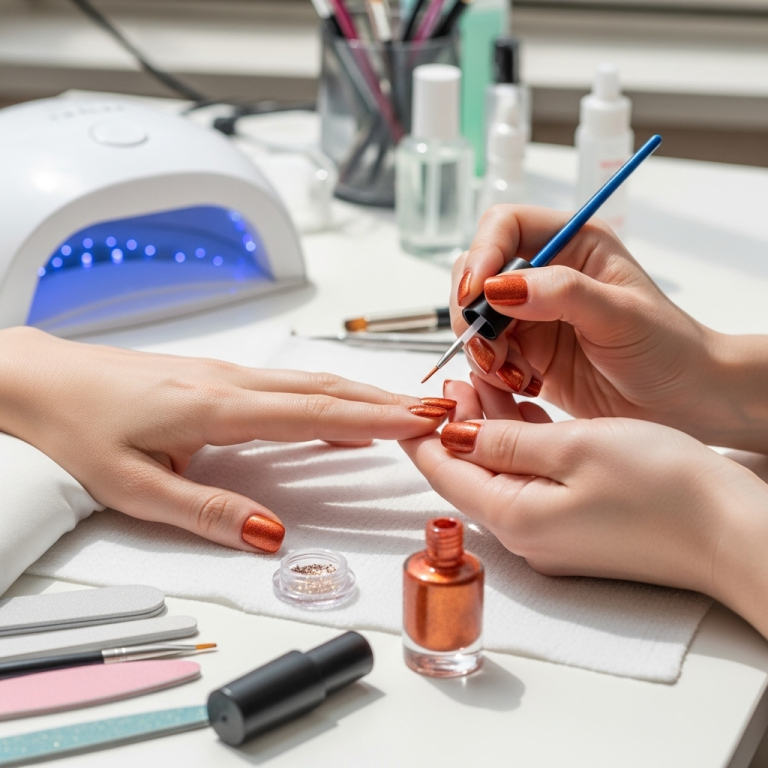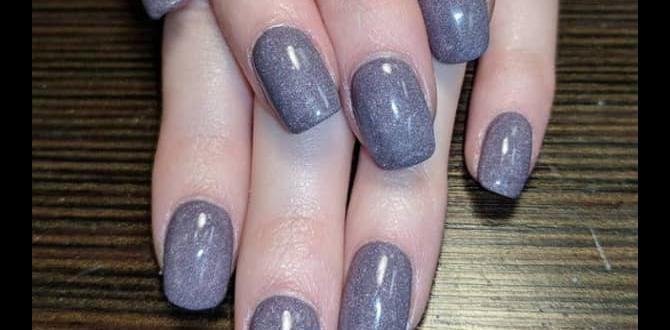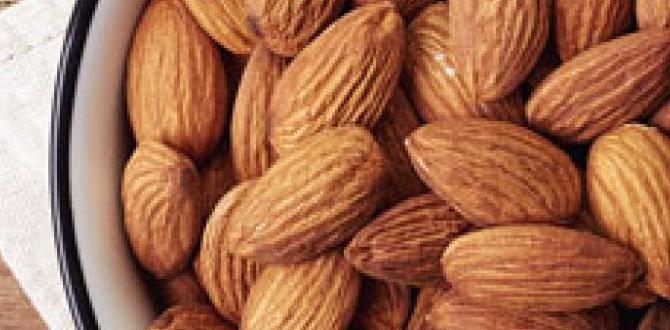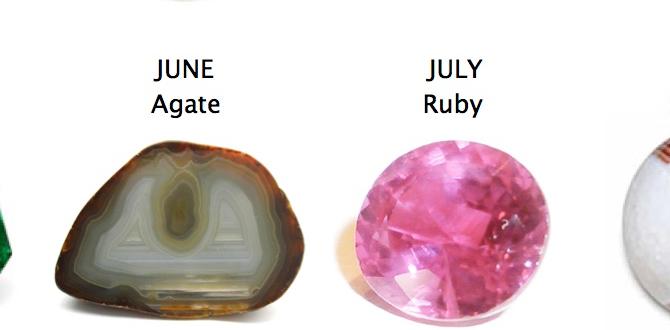Quick Summary: Unlock stunning, easy nail designs using common household items you already own! This guide offers genius DIY solutions for creative manicures without special tools, making salon-worthy looks achievable for everyone right at home.
Dreaming of a fabulous new nail look but don’t have a cabinet overflowing with polish and fancy tools? It happens to the best of us! Sometimes, you just want a quick, cute nail design to brighten your day, but a trip to the beauty store or a complicated tutorial feels like too much. Don’t worry, you can absolutely create eye-catching nail art with things you probably pull out of a drawer or pantry every single day. Get ready to be amazed at how simple it can be to transform your nails with a touch of creativity and a few everyday objects.
In this guide, we’re diving into the wonderful world of DIY nail art using household items. We’ll show you how to get professional-looking results without spending a dime on new supplies. Think polka dots, stripes, abstract swirls, and even a little bit of sparkle – all achievable with items you can find around your home. Let’s get those nails looking fantastic!
Frequently Asked Questions
Q1: Can I really do nail art without special tools?
Absolutely! Many common household items can serve as brilliant substitutes for professional nail art tools. From toothpicks to bobby pins, you can create a variety of designs with just a little imagination and what you have on hand.
Q2: What household items are best for nail art?
Some of the most versatile household items include: toothpicks (for dots and fine lines), bobby pins (for dots and larger shapes), scotch tape or masking tape (for clean lines and geometric patterns), sponges (for gradients and ombre effects), and even things like old makeup brushes or fine-tipped pens (cleaned thoroughly, of course!).
Q3: How do I avoid making a mess with household items?
Preparation is key! Lay down some newspaper or old towels to protect your surface. Keep cotton swabs and nail polish remover handy for quick clean-ups. Work slowly and deliberately, especially when using smaller items like toothpicks. It’s also helpful to have a steady hand; resting your elbow on a table can provide extra support.
Q4: Are these household item designs permanent?
The designs themselves are created with nail polish, so they will last as long as your manicure. With a good base coat and top coat, your DIY nail art can last anywhere from a few days to a week or more, just like a regular polish application. Remember to seal your design with a quality top coat for maximum longevity.
Q5: What if I don’t have any colored nail polish?
Even with just a clear polish and a few other items, you can get creative! You can experiment with layering clear polish to create subtle textures or shine. If you have colored pens or markers (ensure they are non-toxic and waterproof if possible), you might be able to carefully draw designs onto a clear or light-colored nail polish base, sealing it with a quick-dry top coat. However, using actual nail polish is always recommended for the best results and longevity.
Q6: How can I create different shapes using household items?
For dots, toothpicks and the end of a bobby pin are perfect. Slashes or stripes can be achieved with tape. You can also use the edge of a business card or a piece of thin cardboard to create sharper lines. For more abstract looks, consider dabbing with a sponge or even a crumpled piece of plastic wrap!
Q7: Are there any safety concerns when using household items?
Generally, no. When using items like toothpicks or bobby pins, always be mindful not to stab yourself or poke your eye. If using pens or markers, ensure they are non-toxic. The primary concern is usually smudging your polish or making a mess on your table, which is easily cleaned up. Stick to items that are clean and free of debris.
Why DIY Nail Art is a Game-Changer
Let’s be honest, who hasn’t spent way too much time scrolling through Instagram, admiring intricate nail art, only to feel a pang of regret when glancing at your bare nails or simple polish job? It’s easy to feel like beautiful, intricate nail designs are reserved for salon professionals with specialized tools. But what if we told you that you could recreate some of that magic yourself, using items you already have in your home? It’s true! You don’t need a professional kit to get creative with your nails.
This approach to nail art is not just budget-friendly; it’s incredibly empowering. It encourages creativity and teaches you to see everyday objects in a new light. Plus, it’s perfect for those moments when inspiration strikes but your nail polish collection is lacking a specific color or tool. We’re talking about genius hacks that will make your friends ask, “Where did you get your nails done?” all while you smile and say, “I did it myself!”
Gathering Your Genius Household Supplies
The beauty of this DIY nail art adventure is that your “kit” is likely already assembled in your home! Before we jump into the fun designs, let’s get a sense of the versatile items that can become your new favorite nail art tools. You’ll be surprised at how many common objects can help you achieve salon-quality looks.
Think about what you have readily available. The goal is to find items with points, edges, or surfaces that can be used to apply or manipulate polish. Here’s a list of common household heroes ready to transform your manicure:
- Toothpicks: The undisputed champion of DIY nail art. Perfect for creating dots, lines, and drawing fine details.
- Bobby Pins: The rounded ends are fantastic for creating larger dots or even little circular patterns.
- Scotch Tape or Masking Tape: Your best friend for achieving crisp, clean lines and geometric designs.
- Ballpoint Pen (used with polish): A thoroughly cleaned ballpoint pen tip can sometimes be used for drawing fine lines, but exercise caution and ensure it’s completely dry. Nail polish pens offer better control if available.
- Paper Clips: Unfolded, these can create interesting swirling patterns or be used for drawing.
- Rubber Bands: Can be used to create curved lines or unique patterns on the nail.
- Household Sponges: Unused kitchen sponges (cut into small pieces) are ideal for creating gradient or ombre effects and textured looks.
- Cotton Swabs (Q-tips): Essential for cleanup and can also be used to gently dab or blend colors.
- Fine-tipped Paintbrushes: If you have any old, clean makeup brushes or craft brushes, even a thin, stiff-bristled brush can be surprisingly effective for dragging polish or creating abstract strokes.
- Cardstock or Old Business Cards: Great for creating sharp edges or acting as a palette for your polish.
- Plastic Wrap: Crumpled up, it can create a unique, marbled, or textured effect.
- Needles or Straight Pins: Use these with extreme caution; they offer very fine lines but can be tricky and potentially snag the nail if not used carefully.
Remember to clean any item that will come into contact with your polish thoroughly. For items like pens or sharp objects, ensure they are completely dry before use to avoid diluting your polish. It’s amazing how these simple items can unlock so many design possibilities!
Easy Dot Designs with Toothpicks and Bobby Pins
Dots are a classic for a reason – they’re simple, versatile, and always look chic. Whether you want a playful polka-dot manicure or a more subtle accent, dots are incredibly easy to master with just a toothpick or the end of a bobby pin.
The Simple Polka Dot Manicure
This is probably the easiest design to start with. You’ll need your base color polish, a contrasting polish for your dots, and your trusty toothpick or bobby pin.
Steps:
- Apply Base Coat: Paint all your nails with your chosen base color. Let it dry completely. This is crucial to prevent smudging when adding dots.
- Dip Your Tool: Dip the tip of your toothpick or the rounded end of your bobby pin into your contrasting polish. You don’t need a huge blob; a small, smooth bead is perfect.
- Dot Away: Gently touch the toothpick or bobby pin to your nail where you want a dot. Twist slightly as you lift to avoid creating a “tail.”
- Create Your Pattern: You can make uniform dots all over, random dots of varying sizes, or even create lines of dots. For different-sized dots, use the thicker end of a bobby pin for larger ones and the toothpick for smaller ones.
- Let it Dry: Allow the dots to dry thoroughly.
- Apply Top Coat: Finish with a clear top coat to seal your design and add shine.
Pro Tip: If your toothpick tip breaks or gets too much polish, simply snap off the end and use a fresh one. For consistent dots, wipe the excess polish off your tool onto a piece of paper towel between each dot.
The Ombre Dot Effect
Want to level up your dots? Try an ombre effect! This involves using dots of varying shades or colors to create a gradual transition.
Steps:
- Base Coat: Apply your base color and let it dry.
- Choose Your Shades: Select two or three polishes that are similar in color but different in shade (e.g., light pink, medium pink, dark pink; or, for a bolder look, navy, royal blue, sky blue).
- Start Dabbing: Using your toothpick or bobby pin, start dabbing the darkest shade at the cuticle or tip of your nail.
- Transition: Move to the middle of the nail and dab with the medium shade, slightly overlapping the darker shade.
- Blend: Finish by dabbing the lightest shade towards the free edge or other end, again overlapping the medium shade.
- Refine (Optional): You can gently use a Q-tip dipped in nail polish remover to soften the transitions if needed, but be very careful not to smudge!
- Top Coat: Seal with a clear top coat once completely dry.
This technique takes a little practice, but the result is a beautiful, gradient effect made entirely from dots!
Stripe Secrets with Tape and String
Achieving sharp, clean lines can be tricky, but with the magic of tape, it becomes surprisingly easy. Whether you want classic stripes or geometric French tips, tape is your best friend.
Geometric Patterns with Scotch Tape
This is where you can get really creative with shapes like triangles, chevrons, and French tips.
Steps:
- Base Coat: Apply your first polish color and let it dry completely. This is the color that will show through the gaps in your tape.
- Cut Your Tape: Cut small strips of scotch tape or masking tape. You can cut them straight, at an angle, or even into thin strips.
- Place the Tape: Carefully press the tape onto your nail. Ensure there are no air bubbles, as these can cause polish to bleed underneath. The pressure of the tape creates a barrier.
- Paint Over: Apply your second (or third!) polish color over the entire nail, including the tape.
- Peel with Precision: While the second color is still slightly wet (but not runny), carefully peel off the tape. Pulling too soon can smudge the underlying wet polish, and waiting too long might cause the tape to stick and lift the dried polish. It’s a delicate balance!
- Dry and Seal: Let your design dry completely, then apply a clear top coat.
Tips for Perfect Stripes:
- Use a fresh blade or scissors to cut tape to avoid jagged edges.
- Apply the tape firmly to the nail.
- Peel the tape slowly and at an angle away from the nail.
- If you get a bleed, keep a fine-tipped brush dipped in nail polish remover handy to clean up the edges immediately after peeling.
Diagonal Lines Using String or Thread
This is a more abstract way to create lines, offering a unique look.
Steps:
- Base Coat: Apply your base color and let it dry.
- Apply Polish: Paint a stripe of your contrasting color diagonally across your nail. Don’t worry about perfection.
- Lay Down String: While the stripe is still wet, carefully lay a piece of string or thread across the wet polish, pressing it down gently.
- Lift and Create: Carefully and steadily lift the string straight up and away from the nail. The string will drag the polish, creating a wispy, textured line.
- Dry and Top Coat: Let it dry thoroughly and seal with a top coat.
This technique can be a bit messy but yields really interesting, organic-looking lines that tape can’t replicate.
Sponge Techniques for Stunning Gradients and Textures
Want that beautiful, blended ombre effect or a cool, textured finish? A simple household sponge is your secret weapon!
The Ombre Gradient Manicure
This is a popular technique that creates a beautiful fade between colors. Using a regular kitchen sponge (a new one, please!) is perfect.
Steps:
- Base Coat: Apply a pale color or white as your base, and let it dry completely. This helps the ombre colors pop.
- Prepare Your Sponge: Cut off a small piece of your sponge. A rougher texture works best for blending colors.
- Apply Polish to Sponge: Apply stripes of your chosen colors directly onto the sponge where you want them to blend. For example, if you want a pink-to-purple fade, put a stripe of pink next to a stripe of purple.
- Dab on Nail: Lightly dab the sponge onto your nail, rolling it slightly from cuticle to tip or side to side. You want to deposit the color and blend it.
- Repeat and Blend: Re-apply polish to the sponge and repeat the dabbing process to build up the color and achieve the desired blend. Overlap your dabs slightly.
- Clean Up Edges: This is where a Q-tip dipped in nail polish remover is essential! Clean up any polish that got on your skin or cuticles.
- Top Coat: Once completely dry, add a glossy top coat.
Tip: For a smoother transition, you can lightly dab with a clean part of the sponge or a Q-tip after applying the colors. You can also do this on all nails or on just an accent nail.
Textured Marble Effect with Plastic Wrap
Looking for something unique and artistic? Crumpled plastic wrap can create a cool, marbled, or abstract texture.
Steps:
- Base Coat: Apply your base color and let it dry.
- Apply Second Color: Paint your nails with a second color, but don’t let it dry completely. It should be tacky.
- Crumple Plastic Wrap: Take a piece of plastic wrap and crumple it up into a somewhat tight ball.
- Dab and Twist: Gently dab and twist the crumpled plastic wrap onto the tacky polish on your nail. This will lift some polish and create an uneven, marbled texture.
- Add More Colors (Optional): You can repeat this with another color over the top for a multi-dimensional effect.
- Dry and Seal: Let it dry completely





